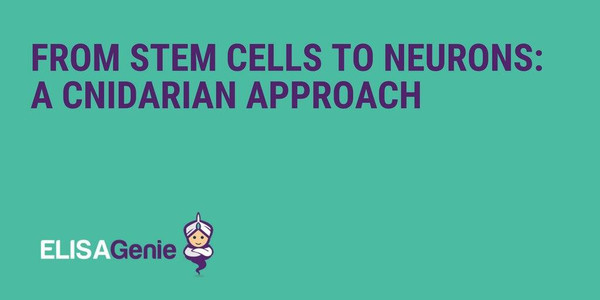From Stem Cells To Neurons: A Cnidarian Approach
By Eleni Chrysostomou, PhD Candidate, NUIG
Why do we need to know how the Nervous System develops and regenerates?
The structure and function of the nervous system remains one of the most fascinating and yet challenging aspects in biology. The way in which neural progenitors (NPs) are specified and spatially arranged, and how they proliferate, differentiate and migrate to form a functional nervous system is controlled by patterning mechanisms which are not fully understood. When it comes to neuronal regeneration, the picture is even more blurry.
Unravelling how these patterning mechanisms are controlled and regulated to form a neuronal network during tissue homeostasis and regeneration is a complicated task for every animal model. To address this issue, we use Hydractinia, a marine cnidarian hydrozoid which encompasses remarkable abilities to regenerate any lost body parts, including functional nervous system after injury.
The origin of committed nerve cells in the regenerating tissues and the molecular mechanisms driving their patterning is not known. To explore this subject, we generated transgenic reporter animals expressing fluorescent proteins under the control of different nerve-cell related genes, including three SoxB genes. Lineage tracing of differentiated neurons, as well as SoxB+ cells, that are expressed at different stages of neural fate establishment, will clarify the role of each cell type and will help to understand how the neuronal network is established both in development and in head regeneration.
Meet our “Non-Mainistream” animal model Hydractinia
According to the Greek mythology, one of Hercules’ labours was to kill the sea monster Lernaean hydra. What he didn’t know was that every time he decapitated one of the monster’s heads, it would grow back in triplicate! But how is that even remotely related to stem cell biology one would think…
With that said, meet our animal model Hydractinia. Hydractinia, a marine colonial hydrozoan can be described as a great representative of the Cnidaria phylum and an excellent animal model to study cell and developmental biology, as its utility let to the assembly of the very first concepts and terms in biology, including the characterization of stem cells (Weismann, 1883).
The stem cells founded in Hydractinia (aka interstitial cells – i-cells) remain collectively pluripotent throughout the organism’s life and they express germ line markers such as Nanos, Vasa and Piwi (Bradshaw et al., 2015; Plickert et al., 2012). Hydractinia can be easily cultured and genetically manipulated in the laboratory without any ethical restrictions, and its application is suitable in various disciplines.
Hydractinia has a relatively simple life cycle. Following fertilization, the embryonic development lasts 36-48 hours and upon induced metamorphosis the primary polyp is asexually reproduced to give rise to the new colony (Figure1). The resulting members of an individual colony share a gastrovascular space, nervous system and migratory stem cells by maintaining tissue continuity (Gahan et al., 2016).

window.SHOGUN_IMAGE_ELEMENTS = window.SHOGUN_IMAGE_ELEMENTS || new Array(); window.SHOGUN_IMAGE_ELEMENTS.push({ hoverImage: '', uuid: 's-946be0e3-025f-4725-bfd0-ec23dd6a95f1' })
Figure 1: The life cycle of Hydractinia (Image obtained from Flici et al., 2017, Cell Reports).
What really makes this animal so intriguing is its regenerative abilities. Like the mythical creature Lernaea, upon decapitation the animal is able to regenerate a fully functional and complete head just within three days (Figure2).

window.SHOGUN_IMAGE_ELEMENTS = window.SHOGUN_IMAGE_ELEMENTS || new Array(); window.SHOGUN_IMAGE_ELEMENTS.push({ hoverImage: '', uuid: 's-894a52ef-13bd-4f1d-9553-5003e4dfea02' })
Figure 2: Live imaging of head regeneration in Hydractinia (Image obtained from Bradshaw et al., 2015, eLife).
Even though working with a not so popular animal model can be a bit demanding, it gives us the opportunity to study developmental aspects not feasible in other animal models. Although structurally simple, Hydractinia encompasses a complex gene repertoire that is highly conserved to their sister branch bilaterians. Not many organisms are able to regenerate body parts and especially their heads. This pioneering model for stem cell biology gives as a highly valuable advantage to gain insights on why other animals including humans have limited or zero abilities to regenerate missing parts of their bodies.

window.SHOGUN_IMAGE_ELEMENTS = window.SHOGUN_IMAGE_ELEMENTS || new Array(); window.SHOGUN_IMAGE_ELEMENTS.push({ hoverImage: '', uuid: 's-b0da1b0e-db46-47e0-8b21-878b97df8661' })
Frank’s Lab. Some people missing as we will never manage to get a picture with all of us.
References
- Bradshaw, B., Thompson, K., Frank, U. (2015) Distinct mechanisms underlie oral vs aboral regeneration in the cnidarian Hydractinia echinata. Elife, 4:e05506.
- Flici, H., Schnitzler, C.E., Millane, R.C., Govinden, G., Houlihan, A., Boomkamp, S.D., Shen, S., Baxevanis, A.D., Frank, U. (2017) An evolutionarily conserved SoxB-Hdac2 crosstalk regulates neurogenesis in a Cnidarian. Cell Rep, 18: 1395-1409.
- Plickert, G., Frank, U., Muller, W.A. (2012) Hydractinia, a pioneering model for stem cell biology nd reprogramming somatic cells in pluripotency. Int J Dev Biol, 56:519-534.
- Weismann, A. (1883). The origin of the sexual cells in hydromedusae. Jena. Gustav Fischer
- Gahan, J.M., Bradshaw, B., Flici, H., Frank, U. (2016) The interstitial stem cells in Hydractinia and their role in regeneration. Curr Op Gen & Dev, 40:65-73.
Recent Posts
-
Trained Immunity: How Your Innate Immune System Learns and Remembers
For decades, immunologists believed that only adaptive immunity—the sophisticated system of T cells …3rd Dec 2025 -
Extracellular Vesicles in Neurodegenerative Disease: From Pathology to Therapeutic Potential
In the intricate landscape of the brain, cells constantly communicate, sending and receiving message …2nd Dec 2025 -
Spatial Transcriptomics: Mapping the Future of Medicine at Cellular Resolution
Spatial Transcriptomics: Mapping the Future of Medicine at Cellular Resolution Imagine being able t …2nd Dec 2025



